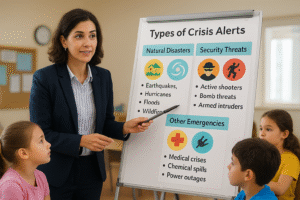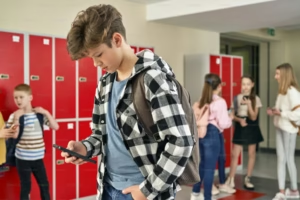News

Advanced School Security Solutions for Cybersecurity, Emergency Response & Staff Training
Our last blog explored the foundational systems schools need for a safer learning environment—Access Control Systems, Video Surveillance Systems, Intrusion Detection, Emergency Notifications, and Visitor Management. These elements create a layered, proactive and reactive defense system tailored to modern threats.
In this follow-up, we advance that strategy by focusing on Cybersecurity, Training, and Drills—crucial pillars that strengthen a school’s ability to respond swiftly and protect comprehensively.

In today’s digital age, cybersecurity is an essential aspect of school security, protecting sensitive information and critical systems from cyber threats. Schools rely heavily on technology for everything from administrative tasks to educational platforms—making them prime targets for attackers. Cybersecurity Resources for K-12 Schools and Districts provide guidance on how districts can build resilience from the ground up.

Figure 1: Cybersecurity measures for schools, including data encryption, firewalls and student data protection
One of the primary challenges in cybersecurity is protecting sensitive information such as student records, financial data, and personal details. Schools must implement strong data encryption, secure access controls, and regular security audits. For a practical roadmap, check out CISA’s K-12 Cybersecurity Action Steps.
Compliance with federal standards like FERPA is also essential, reinforcing responsible data governance and digital protection practices.
Another critical concern is defending school networks and devices against malware, phishing, and ransomware. Schools should deploy advanced antivirus software, enforce regular updates, and conduct security assessments. Staff and students alike need training in threat recognition and response—because human error remains a top vulnerability.

Training and drills help staff and students internalize emergency procedures. These exercises cultivate calm, confidence, and quick thinking—all vital during an actual crisis.
Resources like the Texas School Safety Center Guide offer best practices for inclusive and effective emergency drills. Additionally, tabletop exercises supported by SchoolSafety.gov Emergency Planning Resources can strengthen coordination between staff, responders, and local agencies. Another excellent reference for tabletop exercises is the Maryland Center for School Safety. You can customize or tailor the exercises to your District’s or school’s unique situations. Always remember the 5Ps (attributed to former Secretary of State James Baker) – Proper Planning Prevents Poor Performance. Training and Drills are key components of a comprehensive school safety strategy.

Figure 2: Potential causes of failure- unclear signs, lack of practice, poor communications and insufficient training
Regular drills demystify protocols and promote continuous improvement by revealing flaws or gaps in existing procedures. They also create a culture of preparedness—turning passive awareness into active readiness.
Failure to perform at our best is often not due to lack of ability but lack of adequate preparation.

Creating a secure learning environment demands more than standalone tools—it requires strategic integration and rapid action.
That’s where platforms like SimulAlert® transform theory into practice. Their wearable, color-coded safety badges empower instant alerts and eliminate confusion during critical moments. By combining physical controls, digital safety, and human-centered preparedness, SimulAlert builds a safety culture that’s proactive, coordinated, and reliable.
Because when seconds count, it’s not just about having a plan—it’s about having a system that delivers.
Ready to enhance your school’s safety?
Click here to schedule a SimulAlert® demo.



